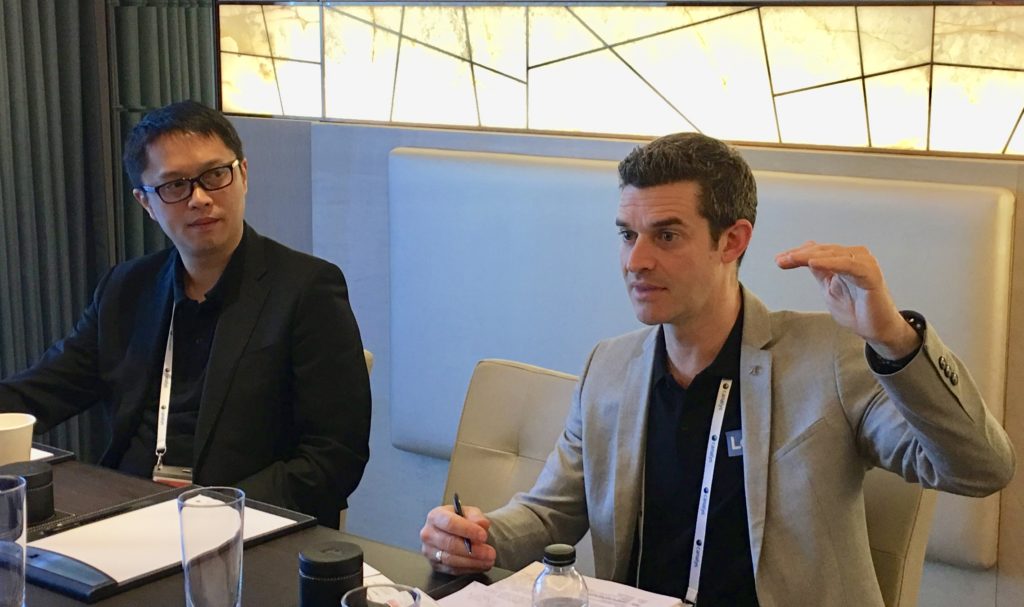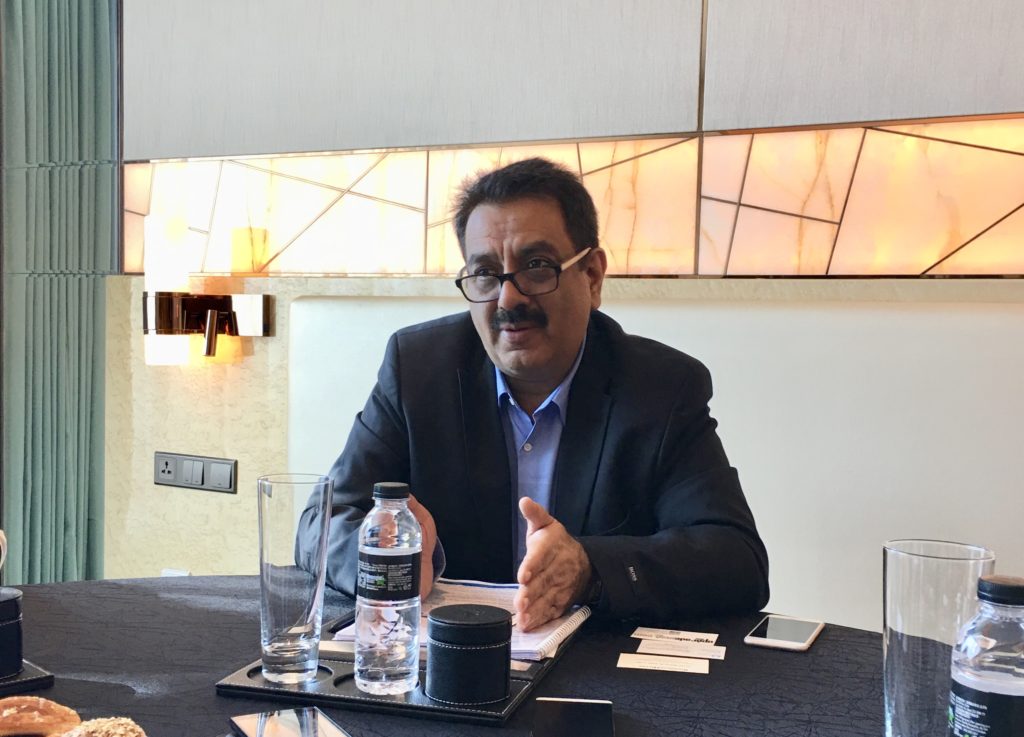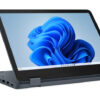MACAU — At the Canalys APAC Channels Forum held in Macau recently, the term “simple” was the common root word uttered by technology giants Dell EMC, Hewlett-Packard Enterprise, HP, Inc., and Lenovo in describing how their channel programs are evolving to help partners increase revenues amid a disruption in the technology industry.
“We need to simplify the channel program much more. It is too complicated,” said Gianfranco Lanci, corporate president and COO of Lenovo, during a Q&A session. Lenovo currently has 60,000 resellers in Asia Pacific and has plans to add more, according to Lanci.
“As much as possible we want to simplify how we run the business together. To do this, we are going to introduce a business portal in Asia,” reveals Lanci. “The opportunity for the channel is still big. The channel industry is going to exist forever.”
Lanci also told delegates that Lenovo will continue to innovate. “Innovation will become important; but to innovate you need to be financially solid because innovation is expensive.” Lanci also said that the two areas of growth for Lenovo and its partners are mobile phones and the data center.
In an interview with the Philippine media, Ivan Cheung, Regional General Manager, Lenovo Asia Pacific Region, said that in the Philippines, 100% of Lenovo’s business is handled by 8 distributors, and the plan is to extend the depth and breadth of the channel network in the country.

Ivan Cheung, Regional General Manager, Lenovo Asia Pacific Region and Nick Reynolds, Chief Marketing Officer for Asia Pacific at Lenovo. PHOTO: MELBA BERNAD
“It may not always be true that adding more distributors is best for the business,” says Cheung. “If we add more distributors and we don’t grow our revenues fast enough, then our existing business partners will be affected. If we need to expand, we will need to evaluate whether or not adding more distributors will benefit the overall business. There are a lot of things going on quickly right now, such as hyperconverged infrastructure and flash technology which our existing partners may not have the capability to pick up; and if we see that capability gap, we will consider adding more partners.”
Growth opportunities: data center and mobile phone
As for areas of growth, Cheung said that while they are still looking for more growth in the PC business, the company is investing on expanding its data center business in the Philippines. Lenovo currently has around 13% to 14% share of the data center market in the Philippines.
“Our core business is PC but we have two growth engines: mobile phones and data center,” added Nick Reynolds, Chief Marketing Officer for Asia Pacific at Lenovo. “Globally, that is where we are going to see growth coming from. But we still want to grow marketshare in the PC and tablet business, and our stated goal globally is to reach 30% marketshare for the PC. We have three premium brands: ThinkPad, Yoga, and Moto. Moto has the the lowest marketshare among the three, so we are looking at exciting growth from our handset business.”
Asked about the challenges being faced by Philippine distributors, Cheung said many are concerned about the currency fluctuation. The US dollar has been gaining strength against the Philippine peso since the start of the year. Distributors are also looking for new products to increase their marketshare. The partners are also looking for a stable and predictable channel policy which they can align with their respective strategies.
“Our business partners have also said to us that we need to improve our systems and tools; help them become more efficient, and make it easier to do business with Lenovo,” adds Reynolds. “So today, we are doing a soft-launch of the new Lenovo business partner portal. This is one of the tools we are rolling out and will be coming to the Philippines in the next six months; it will assist all business partners to do very simple things but more efficiently.”
The portal, Reynolds explained, will provide information about the latest pricing, promotions, reseller rebates, incentives, and earnings. “The portal will also have things that are useful to help sell, like marketing content, whitepapers, case studies, and deal registration.”
The portal is currently available in Australia, New Zealand, and Japan, and will be rolled out in the rest of Asia Pacific in the next six months.
“A true partnership is when we partner for profitability; that is a strong statement of intent and so we need to translate that into action,” said Amar Babu, Chief Operating Officer for Asia Pacific and Chairman for Lenovo India.
‘Channel happiness’
At Hewlett-Packard Enterprise, achieving “channel happiness” is key, according to Peter Ryan, Chief Sales Officer, Enterprise Group, HPE. “Simplicity and agility of the channel program is a priority,” he said.
In his keynote at the Forum, Ryan said the company has been in a “perpetual motion in the last 12 months.” In November last year, the company officially split itself in two: HP, Inc. and Hewlett Packard Enterprise, betting that two is better than one.
For HPE, the growth areas for its business partners are digital transformation, hybrid IT, edge, hyperconverged infrastructure, and cloud computing, according to Ryan.
“Hyperconvergence presents a huge opportunity for the channel,” says Ryan. “We view ourselves as a key player in the ecosystem that will drive digital transformation going forward; and we have a strong belief that hybrid IT will win.”
Certification and competencies are key
In an interview with Philippine media, Neeraj Sharma, Vice President, Indirect Sales, Enterprise Group, Asia Pacific and Japan at HPE, says that the growth in hybrid IT is driving transformation in the channel market. In the Philippines, more than 90% of HPE’s business is done through the channel.

Neeraj Sharma, Vice President, Indirect Sales, Enterprise Group, Asia Pacific and Japan at HPE. PHOTO: MELBA BERNAD
“The transformation is forcing the partners to look at new models, it’s creating cost pressures on their cost margins, and hence, they have to change their skills. We are seeing partners maturing from just being hardware sellers and support service providers to advisors.”
To help its Philippine channel partners in their transformation journey, HPE is looking at getting more partners certified, according to Neeraj. “Clearly for us certification is a key thing. But we feel that we need to go down the solution path even stronger, so we are introducing competencies for specific solutions.” Neeraj noted that it is important that HPE’s partners develop their skills in cloud computing and hybrid IT.
Neeraj said that it is also helping its partners create demand. “We also make sure we compensate them on the objectives we want to focus on. As we move towards this transformation journey, we will also be launching a service provider program in some countries, and gradually come to the Philippines as well.”
Neeraj says that the goal behind achieving HPE’s “channel happiness” is creating enough demand and business opportunities for partners. Joint business planning is also a key part of HPE’s channel program, he said. “For us, compensation, transformation, and enablement of business partners is very, very critical.”
HPE’s distributors in the Philippines are MSI-ECS and Thakral.
A partner-led company
“The separation of HP has enabled us to move forward more rapidly,” said Richard Bailey, President of Asia Pacific Japan, HP, Inc. in his keynote address. “HP is transforming the channel program so channel partners can make more revenues. We are also reinventing the sales platform, and one of the enabling technologies is social media. We are not only a partner-first company, but also a partner-led company.”
Bailey said that opportunities for channel partners lie in rapid urbanization; changing demographics; hyper globalization; and accelerated innovation.
“Print security is a top priority for HP Inc.; and mobility is exploding,” said Bailey.
Simple, predictable, and profitable
While HP believes two is better than one, Dell and EMC have gone the opposite direction. In September 7, Dell Technologies completed the acquisition of EMC Corp., creating a $74-billion company with an expansive technology portfolio, and now the world’s largest privately-controlled technology company.
In his keynote, John Byrne, Dell EMC’s President, for Global Channel, says that Dell and EMC channel partners have already completed the integration process and are now in the market selling Dell, EMC and VMware together as one solution. Byrne says that in most cases, Dell EMC will focus on deepening its relationships with current partners rather than recruiting new resellers.
“We are building a world-class partner program that is simple, predictable, and profitable,” said Byrne.
Byrne said the new Dell EMC Partner Program will integrate two channel programs and will encompass the entire Dell EMC partner ecosystem, inclusive of solution providers, cloud service providers, global alliances, OEM solutions partners and distribution.
Scheduled to launch early next year, the program provides transparency while ensuring predictability and profitability, according to Byrne.
Byrne noted that partners can expect greater consistency on a global scale, including one common approach to deal registrations alongside greater staff incentives to cross-sell.
Today, Dell EMC’s channel business is worth $35 billion and over 60% of its business goes through the channel. Amit Midha, President APJ Commercial Dell EMC, adds that out of the 63 countries where the company does business in APJ, 58 are 100% channel.
“The marketplace needs solution providers,” said David Webster, President, Dell Asia Pacific and Japan – Enterprise Sales. “CIOs want prescription and direction. If you’re not best-of-breed and you’re not number one, CIOs will not do business with you.”



















































































































